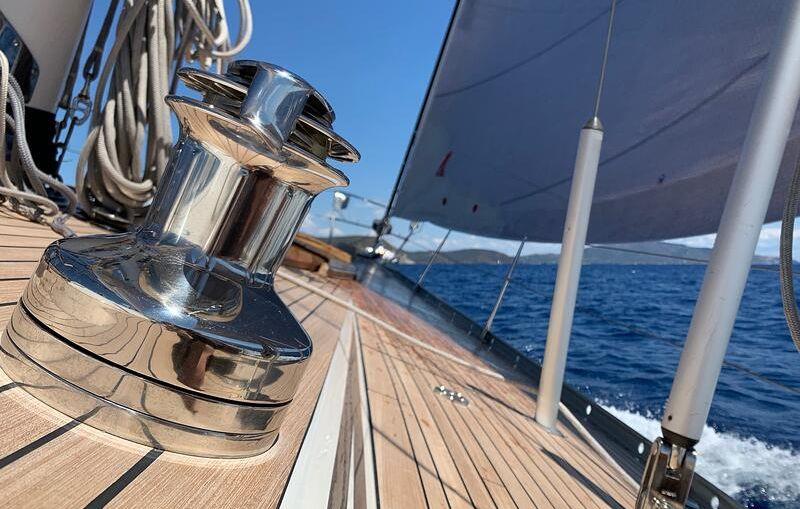
Electric Sailboat Winch - Horizontal, Vertical or Compact Motor?
by Kerri Robson 15 Apr 2021 12:00 BST

Electric Sailboat Winches Compared © Andersen Winches
You've chosen to upgrade from a manual winch to an electric winch. Now, you need to decide on motor placement. This is a critical design decision which largely depends on your boat's available space below deck. Ask yourself: 'What is going to fit, and what is going to be the least work?'.
Below Deck
An electric winch with a motor mounted below deck will be taking up space in the cabin headroom or storage locker. Depending on the configuration of your boat, there are several viable options to achieve optimal use of space - horizontal, vertical or compact models.
Horizontal
As the name suggests, the motor for the 'horizontal' configuration sits below deck, at a horizontal angle. Horizontal electric winches are also available in a left-hand or right-hand version, depending on the layout of your boat. The orientation (left/right) is important as the winch is designed to be loaded on a specific side, so they cannot simply be swivelled by 180 degrees.
Vertical
Electric winches with a 'vertical' configuration sit below deck, at a vertical angle. In this configuration the motor sits directly below the winch drum. The vertical distance below deck is considerably more than the horizontal configuration.
Compact
If cabin headroom or locker space are at a premium, some manufacturers, such as Harken and Andersen, also offer compact models. Using different motor technology, these compact motors are smaller in size than the horizontal and vertical configurations and require less space for installation due to their low-profile gearbox and motor partially embedded in the drum.
Above Deck
For some boats, there might be no available space for a winch motor below deck. Fortunately, Andersen also offer a compact winch in an 'above deck' configuration. This model requires no space below deck at all, with the motor mounted straight onto the deck.
However, there are important considerations to be made when choosing this configuration. If you're moving to an 'above deck' winch for the first time, the added height of the motor will significantly alter the angle of approach of your lines.
For example, the line entry height for Andersen's 28 winch is 75mm. Adding the above deck compact motor changes the line entry height to 150mm. Your clutches, turning blocks and lines will likely need to be adjusted accordingly to achieve the recommended line entry angle of 3-8 degrees.
In addition, when choosing the above deck configuration you must also be wary of water ingress. With the motor more exposed to the elements, additional precautions should be taken to protect it.
You can view the Electric Winch range or if you have any questions about switching to electric winches, you can contact or use the Winch enquiry form.